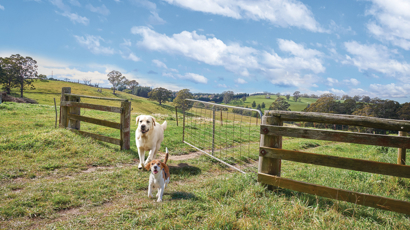How to Check Your Dog's Dental Health

Concerns about your dog’s dental health is completely justified. Seeing as dental issues (most commonly ‘periodontal disease’) are reported to affect 89% of dogs over 3years of age1, keeping an eye on their oral health is an expectation from every pet parent and also a good marker of responsible pet ownership. In this article we’ll walk you through how to do your very own dental check at home, which will give a good indicator of whether a visit to your vet is warranted and highlight what interventions you might make to prevent problems from arising. Do a dental check once every 6-months and if you notice any of the early signs of dental issues highlighted below, it's important that you speak with your vet who can take the process further and bring together a full dental care plan.
STEP BY STEP DENTAL CHECK:

- Start from afar, with a visual check.
|
QUESTIONS TO ASK |
WHAT YOU’RE LOOKING FOR |
|
Have any behaviours changed, particularly around feeding time and the food bowl? Have their interactions with the world (where mouth-use is required) recently altered?
|
If they have dental issues or oral pain, you might notice a dip in their appetite if it’s uncomfortable to eat, or a strong preference for wet over dry food, or move away from one particular treat, or even ball or stick chasing. Our dogs do a lot of interacting with their mouths, so an overt dental issue will often shift the way they interact with you and the household around them. Eating and chewing behaviours can change if they have dental issues.
|
|
Are there any obvious lumps or bumps or discolorations or lesions (around their mouth)? Any lip issues or drooling? |
Look for obvious signs of swelling on or under the lips and around the muzzle. If any areas around the mouth have changed in colour, if there is evidence of scratching, hair loss, red or bleeding skin, accumulations of food or ongoing drooling which can happen for a number of reasons, then take note of it, and discuss these with your vet. |
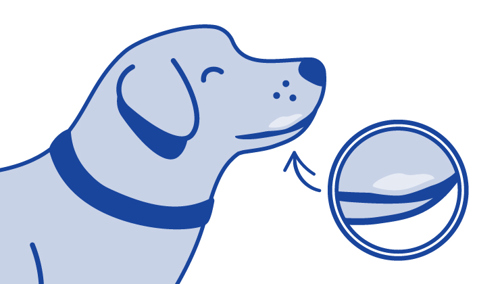
- Getting closer: sniff and touch. Now we should hone in on the mouth, getting close enough to use more of our senses. Panting is good to look and smell, but don’t interrupt if they’re ‘letting off steam’: in which case, it’s best you wait for them to cool down and relax.
|
QUESTIONS TO ASK |
WHAT YOU’RE LOOKING (OR SMELLING) FOR |
|
What can I smell? Is it ‘foodie’ or is there something more going on? |
Dog breath can be unpleasant, depending on their diet. But you’re checking for something more foul than the smell of their food. The bacteria that establish in their mouths produce odorous compounds which become pungent and overwhelming when periodontal dental disease sets in. You’ll be able to smell it easily if there’s an established problem. |
|
Are they happy for me to touch and feel my way around the muzzle? Can I feel any sensitivities or lumps and bumps (mentioned above)? |
If you ‘pet’ and handle around the muzzle and surrounding areas, your dog will react by pulling away if there are any painful points. You can get closer and feel any lumps or bumps, and even sometimes feel the salivary and lymph glands which are in similar locations toward the back of the lower jaw. Any swellings or sensitivities here may indicate a possible problem. |
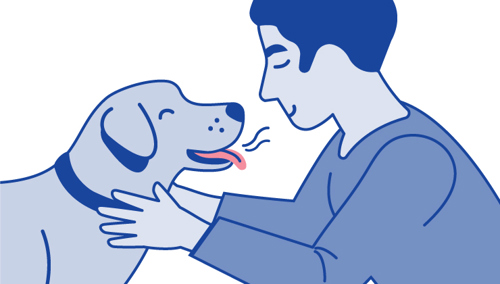
- Closer still, IF they’re comfortable. It’s time to get your hands dirty, but again ONLY if your friend is giving indicators that they’re comfortable.
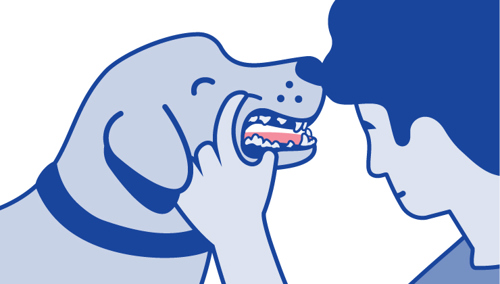
- Can I lift the upper lip and tease down the lower one, to get a good look at each and every tooth? Are they all present? If you’re really keen, your vet can give you a dental chart so you can map each and every tooth, to establish whether they are all present and accounted for. Tooth loss is the result of advanced dental disease, whether it be the painful detachment of a diseased tooth, or removal by a vet. Complete loss may have resulted from a traumatic injury too.
- What is the condition of each tooth you see? Are they all intact? Any fractures or uneven wearing? Discolouration? Is there any brownish/yellow tartar (or calculus) sitting on any tooth surface? At the same time as counting them, you will have observed their condition. Healthy teeth are just a little off-white (think about the teeth of a 6 month old puppy that has just had it’s adult teeth come in). Anything different should be noted and reported back to your vet.
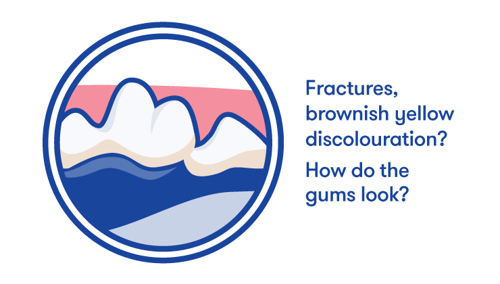
- While you’re here: how do the gums look?
Gums are a great marker of oral health and redness, or even spontaneous bleeding can happen then gingivitis (inflammation of the gums) has set in. If you’re seeing anything beyond the healthy pink that we associate with our own mouths, there may be a problem.
The gums should always be moist to touch too, indicating good salivary function and healthy hydration.
And that’s it! Practically you’ll realise that a dental check isn’t a massive challenge, provided your dog is happy for you to get up close and personal.
When you’re looking into only one dog’s mouth (your dog!) you might question ‘Is that normal?’ or may be unsure on a few things. We’re certainly NOT encouraging you to look into the mouths of dogs that aren’t familiar to you, but if you have a healthy relationship with another, it may be a good lesson to do the favour of a dental check on them too. It’s easy to jump on-line and search for ‘photos of dental disease in dogs’, but we advise that you don’t get too carried away with this and allow the vets and nurses at your local clinic show you some pictures from their own patients, so they can tell you stories and share exactly what you’re looking for and identify any misinformation.
A ‘doggie dental check’ is your first step in bringing together an at home oral health plan. Whether you know it or not, we all have one ourselves, and so should our dogs.
Daily brushing is the best defense as it mechanically removes the film of plaque that kickstarts the issues we most frequently see in dogs. To accompany brushing, there are some great foods like Healthy Benefits Dental , which supports oral hygiene by means of a host of features. A unique kibble shape and size, alongside cellulose ingredients which create a texture that aims to clean, and a host of nutritional additives which also target the mouth. When tooth health is your priority, Healthy Benefits Dental is a helpful addition to your dog’s overall dental homecare plan.
1Stella JL, Bauer AE & Croney CC. (2018) A cross-sectional study to estimate prevalence of periodontal disease in a population of dogs (Canis familiaris) in commercial breeding facilities in Indiana and Illinois, PLoS ONE. (2018) 13:e0191395. doi: 10.1371/journal.pone.0191395

